Last Sunday I was Spring Lake Park Reserve for some park service work. It wasn't the best light for photos, but I noticed a pair of phoebes raising two cowbirds.
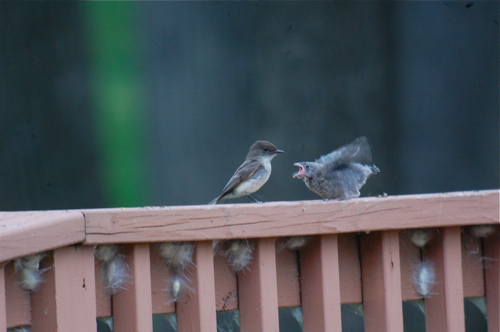
As I took photos of a phoebe feeding a cowbird chick, I noticed a whole mess of cocoon on the wooden rail the birds were perched on. Then I looked around to the surrounding trees:
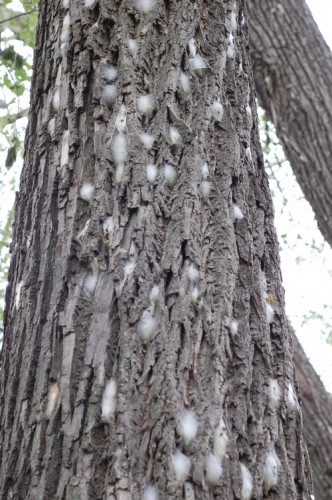
The tree trunks were covered with webby white cocoons--it was an unbelievable amount bugs. I looked up to the trees and noticed that the leaves were half the size they should be and man of the branches were bare. This park has a major forest tent caterpillar infestation. I noticed a pair of nuthatches working the trees and they appeared to be happy to take advantage of the food source.
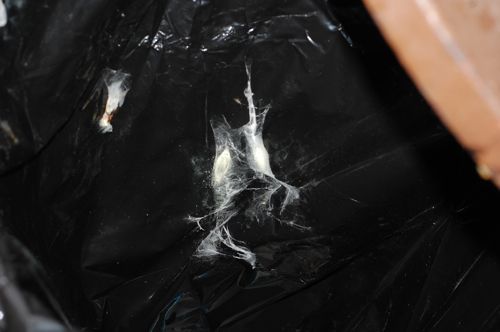
I found cocoons nestled in grass, tucked on every branch of a cedar tree, in neat lines behind sign posts, tucked between slats on picnic tables and even a few caterpillars foolishly managed to form their cocoons along the bags lining the trash bins.
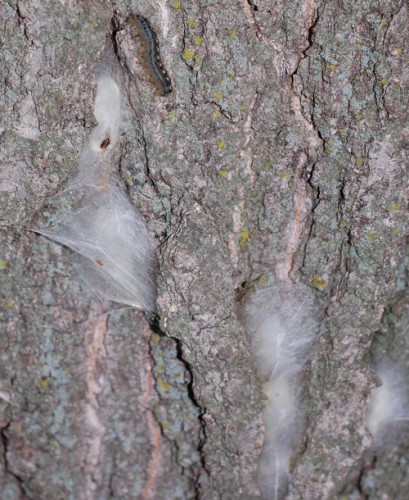
I wonder what it's going to be like when all the forest tent caterpillar moths come out at once? A big fluttery orgy? There's only one generation per season, so when the moths hatch, it will be one big mating fest, then lots of egg laying and a die off. It will be interesting to see if there's another outbreak next year at Spring Lake. Should make the birds very happy.
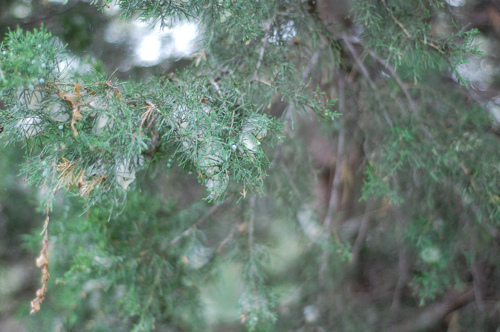
Unlike other tent caterpillars, forest tent caterpillars do not make a big collective tent--just a bunch of little ones when they form their cocoons. The upside is that they trees that they have defoliated still have time to grow a new set of leaves. According to the University of Minnesota's Extension Service, it's rare for forest tent caterpillars to kill a tree. So if you see these in our yard, just think of it as a bonus bird feeder for the summer.
